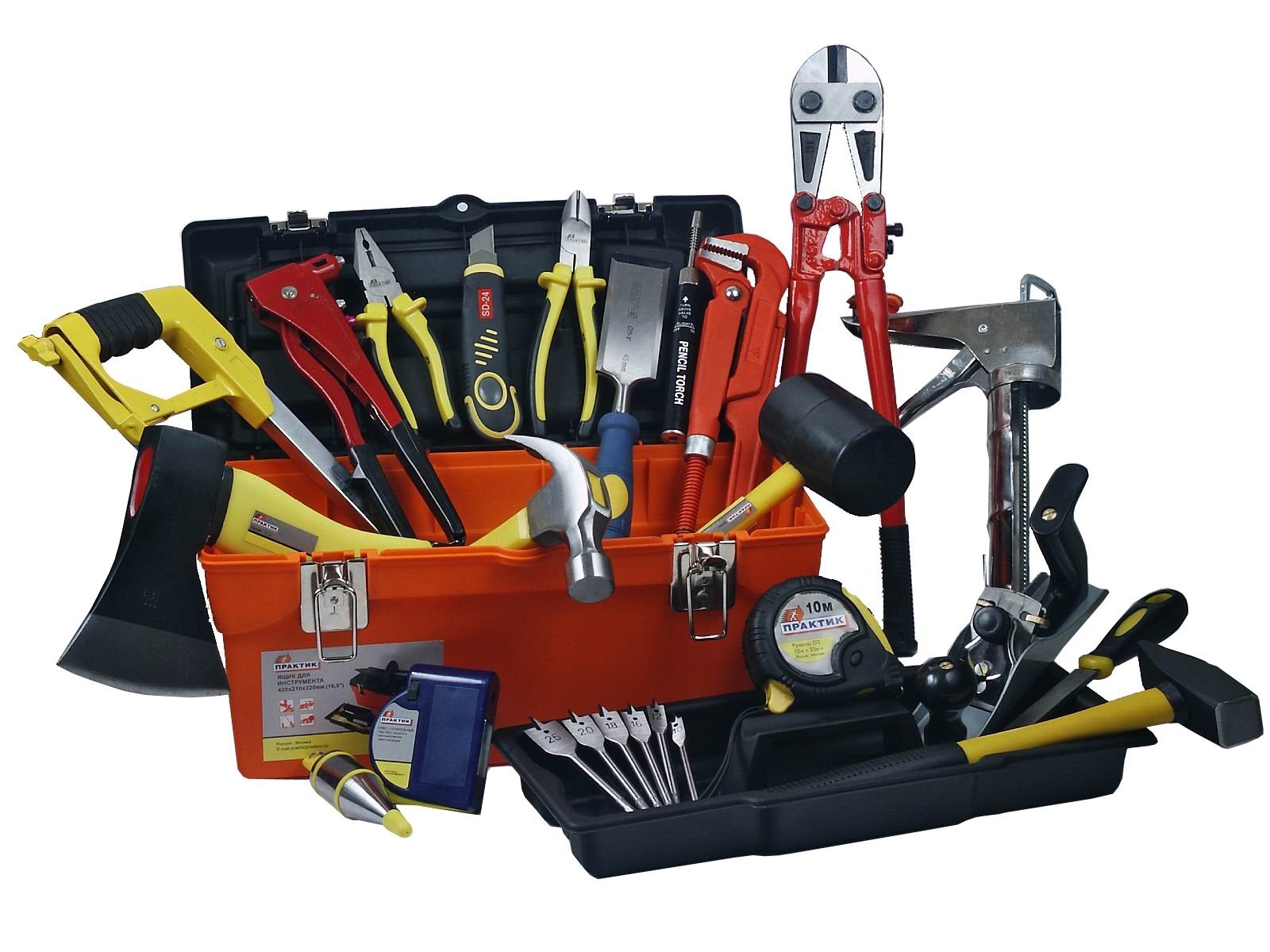In the considered option for making an Adirondack chair with your own hands, the design features are preserved, but there are no difficult carpentry joints. It will not be difficult to repeat the project by making wooden parts according to our drawings and assembling the product using screws.
The work uses planed 20 mm pine boards, galvanized screws 4.5x40 mm, bolts 10x60 mm with a square headrest and nuts with washers. A jigsaw and a grinder will speed up the process, and manual frezer will allow you to carefully round the edges, but all workpieces can be cut with a regular hacksaw, and the burrs can be removed manually sandpaper.
 Adirondack chair structure: 1 - backrest bar; 2 - screws; 3 — upper cross member; 4 - posterior leg; 5 — side support (spar); 6 - bolts; 7 — armrest; 8 — front leg; 9 — seat bar; 10 — armrest support
Adirondack chair structure: 1 - backrest bar; 2 - screws; 3 — upper cross member; 4 - posterior leg; 5 — side support (spar); 6 - bolts; 7 — armrest; 8 — front leg; 9 — seat bar; 10 — armrest support
Manufacturing of parts
Most complex elements chairs - two side seat supports. Make a full-size template on paper for the spars.
 Side support drawing
Side support drawing
Draw the bottom side of the part, lift the first perpendicular segment from the left and two more at corresponding angles to point A. Mark point C and draw a cutout for the cross tie as shown in the diagram.
Mark an angle of 75° with vertex C, extend its lower side with a line. Draw an arc with a radius of 116 mm, measure the angle at point D and connect them with a segment.
Draw a curve between points A and B using a square grid or an improvised pattern as in the photo.

Place the cut template on the board, avoiding large knots and leaving small ones away from the edges of the workpieces. Trace the contours and file the parts using a saw on straight sections, and cut out the curly contours with a jigsaw. Guide the tool blade in the direction of the grain so that the wood is less likely to chip.

Transfer the drawings of the remaining elements of the chair onto the boards, also using a template, or draw directly on the blanks and mark the next identical part according to the first one cut out.
 Drawings of parts: 1 - upper backrest guide; 2 — lower cross member of the backrest; 3 — armrest (2 pcs.); 4 — armrest stop (2 pcs.)
Drawings of parts: 1 - upper backrest guide; 2 — lower cross member of the backrest; 3 — armrest (2 pcs.); 4 — armrest stop (2 pcs.)
The shape of the curves of the armrests is not structurally important; you can draw them by hand or using a pattern. Mark the second part in a mirror image so that the chips when sawing are at the bottom of the workpiece.
 Parts drawing: 1 — backrest strip (7 pcs.); 2 — seat bar (8 pcs.); 3 — front leg (2 pcs.) 4 — rear leg (2 pcs.)
Parts drawing: 1 — backrest strip (7 pcs.); 2 — seat bar (8 pcs.); 3 — front leg (2 pcs.) 4 — rear leg (2 pcs.)
Sand the ends, joining similar pieces together if possible. Route the edges of the top surfaces of the armrests and backrest slats, or simply soften the sharp edges with a sander.
Assembling the chair
Wooden furniture always begins to rot from the joints, internal surfaces which cannot be processed on a finished chair. Therefore, cover the parts with 2-3 layers of antiseptic before assembly.

Most of the components of the chair are connected with screws; the guide holes for them are drilled with a combined countersink, selected according to the thickness of the screws. When they want to hide the caps, they are deepened and covered with glue plugs.

Place a scrap board on the table and place the left side support and front leg on top. Align the workpieces according to the drawing, mark the drilling points.
 Chair side assembly diagram
Chair side assembly diagram
Make holes for the bolts and fasten the parts. Install the rear leg, placing it perpendicular to the bevel of the support. Assemble the right side of the frame in the same way. Connect the sides of the chair with the lower backrest crossbar and the first seat rail.


Install supports on the front legs, securing them with clamps for convenience. Screw the armrests with screws.

Secure the top backrest rail, aligning it with the bottom crossbar. Right now it is possible to correct possible millimeter-by-millimeter marking inaccuracies and uneven cuts.

Small errors can be eliminated by shifting the upper cross member and trimming the angle under it. IN as a last resort, you will have to unscrew the bottom crossbar and adjust the cutout.

Mark the center lines on the cross boards and on the center backrest strip. Holding the latter at the top with your hand or grabbing it with a clamp, drill a pilot hole and tighten the bottom screw. Check the vertical position and secure the top of the rail.

Screw all the strips one by one at even intervals. Take a piece of string and tie one end to a pencil and the other to a nail secured at the junction of the seat and backrest. Draw a radius of curvature, cut the strips according to the markings and sand the edges.
Having adjusted the width of the last seat rail, put it in place. Inspect assembled chair and sand down markings, chips and other defects. Carefully sand the top surfaces of the backrest and seat parts.

Coat the wood with oil if you want to preserve its natural shade. Use synthetic resin glaze to create an opaque colored surface.
Not only craftsmen know how to make exclusive, comfortable furniture from scrap materials. The advantage of such an activity is obvious - it is the opportunity to translate into reality the most bold ideas for variety of living space. An additional bonus is the low cost of making homemade soft chairs with your own hands. Following the advice of designers, you can make a soft chair for a pleasant time in own home. At home, you can exactly repeat all the stages of factory production of this modern and convenient attribute for decorating a children's or living room. On the Internet you can find both the simplest and most complex schemes.
The first step in making homemade upholstered furniture The choice of fabric for the external design of the soft parts of the structure is used. Each master selects upholstery depending on physical properties and price aspects and features that different drawings have. Let's look at the most common fabrics for decorating chairs in our time:
- velor – velvety to the touch, gives the furniture a certain charm;

Velor upholstery
- flog is a distant analogue of velor, easy to clean, so designers use it to decorate children's upholstered furniture;

Upholstered flog
- chenille - a fabric based on a combination of natural and synthetic fibers, has particular wear resistance (a well-thought-out structure prevents the formation of pilling);

Chinille in upholstery
- jacquard - the upholstery is considered durable, but over time the loops turn into puffs;
- natural tapestry is the most expensive and beautiful view upholstery fabrics;

Upholstered jacquard
- faux suede – universal option for armchairs in a sunny room, UV-resistant and easy to clean;

Faux suede upholstery
- leatherette is a durable material that allows you to play with decorative embossing.

Leatherette upholstery
Material, fittings, tools for frame attributes
Creating a frame chair from scratch presents some difficulties. But the finished product will have a more respectable appearance. You can verify this by looking at photos of finished homemade products. You can also use an old Soviet “grandmother’s” chair for the base.
To make a simple frame for an upholstered chair, you need to select durable sheets of 20 mm plywood for cutting out parts yourself. A standard set of repair tools with an electric drill, a jigsaw, a steel ruler, and emery cloth, metal rims, masking tape, pencil, tape measure, thin nails, self-tapping screws, wood glue, stain, glossy paint. For upholstery you need: artificial leather or fabric, foam rubber (filler).
Step-by-step creation of upholstered furniture with a wooden base
- If you don't know how to make a drawing for the base, then look ready-made options schemes on the network. As a rule, they are transferred to a cardboard template with a pencil. Only after this they begin to perform the operations of the described algorithm. This will help you save on excess material, or vice versa – avoid purchasing missing parts.
- Using a cardboard template, future constituent elements are cut out from plywood sheets:
- banana-shaped sidewalls;
- cross bars.
It is important to determine required angles tilt, bend and dimensions of the future frame. A photo of the finished chair, created according to your design, will help with this.
- The next stage is surface treatment wooden parts by stripping and grinding. The ends are worked with special care to improve the quality of the work done. These parts are first impregnated with heated drying oil and only then bends are formed with a hammer, if they are provided for in the sketch. Each component element is cut out with an electric jigsaw.
- The sidewalls are painted or treated with varnish-stain. The ends of the side parts are reinforced with metal rims.
- The further course of action is related to the covering of the frame. Using an electric drill, make the required holes. The rims are fixed with screws.
- First, the back part of the back is covered with artificial leather or fabric, then the remaining fragments of the structure, incl. and seats.
- The upholstery material is secured with wallpaper nails, which are characterized by large heads. In the back of the frame chair, the upholstery is fixed along the edge, along the transverse parts, to better cover the slats.
Pattern of a round chair Wooden frame We cover the frame with fiberboard cardboard
Experienced furniture makers recommend additionally treating the fastening points with wood glue. This move is needed to increase the durability of the furniture you create yourself.
Secrets of reliable upholstery: how to sew
The process of stretching the upholstery of soft chairs has its own nuances:
- Foam rubber is cut to the size of the seat (average thickness - 5 cm). The part is glued to the surface of the plywood sheet.
- Horizontal and vertical fabric straps are attached to the back construction stapler. Similar belts are added to the armrests and sides from the inside along the shape.
- A piece is cut from a piece of foam rubber 0.1 cm thick, which will be larger in size than the area of the seat (the difference is 4-5 cm). Take a piece of synthetic padding fabric of a similar size with an elongated front part and fasten it with your own hands.
- After the manipulations have been completed, the upholstery is covered with furniture fabric. Using a stapler, the textiles are secured to all corners of the cover and the synthetic foam layer to the frame of the chair seat.
- The sides and armrests are also covered with padding polyester, secured with aerosol glue over the entire surface. Only after this the parts are sheathed with fabric, securing the flap along the staples.
We cover the chair with foam rubber. Additionally we put padding polyester
Much has been written about the beneficial effects of relaxing in a rocking chair. It also helps to concentrate during intellectual work. Finally, it’s just convenient, after pumping, to take books from the rack behind your back or a cup of coffee from coffee table. The prices of ready-made rocking chairs, as it should be in a consumer society, react to such advantages in their own adequate way: a rocking chair for 5,000 rubles. it's still cheap. And people are artisans and also respond adequately in their own way: there are more and more people wanting to make a rocking chair with their own hands. However, the rocking chair differs from other pieces of furniture, firstly, in that the whole thing moves and swings. Secondly, so that it does not turn from a rocking chair into a kicker or tipper, the entire product with the person seated in it must have a precise balance, which must be maintained within acceptable limits for riders of different weights and builds. This publication is devoted to consideration of issues of how to achieve the required qualities of a rocking chair.
Types of rocking chairs
You need to comply with your own needs already at the stage of choosing a prototype. There are several types of rocking chairs, aimed at users with different habits and needs. The main types of rocking chairs are shown in the photo. Rocking chairs on simple radius runners (arches, rocker arms, skis) were the first to appear in everyday use. They are in use to this day, both in modern and classic appearance, pos. 1 and 2. Their main advantage is constructive and technological simplicity.

Radius runners provide smoothness and softness of rocking only with relatively small swings, and with strong swings they do not guarantee against tipping over. Therefore, rockers “on radii” are made with a low landing, ensuring a large excess of the center of the generating circle (CO) over the general center of gravity (CG); For more details on the kinematics of rocking chairs, see below. If a seat of normal height is required, then the runners are equipped with bumpers, pos. 3. The shocks of the bump stops on the floor are noticeably felt at the “fifth point”, and in any case, you have to get out of the rocking chair on the radius runners, straining somewhat.
Note: Stability when swinging with a slightly larger amplitude at a normal landing height is provided by rockers on radius runners with a closing horizontal arc, see fig. on right. But, suddenly the limit is reached, the supporting surface instantly reduces to a point and a sharp push follows in the back.
Tipping is excluded in rocking chairs on runners of variable curvature, pos. 4. All of them are comfortable enough for riders of different body types. They themselves gently unseat the rider of a rocking chair of the Nirvana type who has stood up and leaned forward on runners of variable curvature, pos. 5 and 6. It is also possible, by changing the progression indicator in the law of change of the generating radius (also see about kinematics), to design them for any landing height, within acceptable limits.
Note: mother and baby are given complete rest with complete unity of souls in the rocking cradle. Reliable rockers with a cradle are made only on runners of variable curvature, see fig. on right. Otherwise, suddenly the little one will get worried and the mother will perk up, and we can tumble together. Which is simply dangerous for a baby.
Nirvana rocking chairs on elliptical runners, pos. 7, provide a gentle, truly blissful rocking, but do not prevent capsizing during strong swinging, so they are equipped with bump stops; the front one is often combined with a footrest. Garden rocking chairs with ellipse awnings never tip over, pos. 8.

Nirvana rockers on springs, see fig. on the left, they swing as softly as on ellipses, because The mechanical characteristics of the springs are progressive. But making a spring chair with your own hands is difficult: you need either high-quality boards of special types of wood (teak, boxwood, dogwood) or a rubberized strip of spring steel so that it does not scratch the floor. In addition, dirt gets packed into the gap between the spring and the runner and it can be very painful to pinch your finger. For the latter reasons, spring chairs are now very rare on sale.

Rocking chair 3 in 1
Finally, there are also multifunctional “3 in 1” rockers on runners with smooth bends, see fig. on right. When seated upright, this is a regular chair; by leaning back, it can be switched to rocking mode on radii, and by leaning back even more, it can be turned into a sun lounger. But the dimensions of the 3 in 1 rocking chair are too large for apartments below business class, and transitions from mode to mode are accompanied by rather sensitive shocks. In unsuccessful models, you either have to stand up or twitch, squirm and fidget like a puppet on strings. Therefore, 3 in 1 rocking chairs are a piece of furniture for everyone.
To start
Without any special pretensions, just to relax after work, a rocking chair on radius runners will help. Drawings of a simple sample, made, with the exception of the runners, only from straight parts, are given in Fig. This chair can be made for the dacha, veranda or garden in half a day, using only a jigsaw, a drill and a couple wrenches(assembly - bolted). And having rocked to your heart’s content, you may already think about a home rocking chair for the more sophisticated; then you will need a more thorough tool and knowledge.

How does it swing?
Most home craftsmen make rocking chairs according to ready-made drawings, but prototypes often turn out to be developed and tailored to a specific person, and an exact replica is not so convenient. Therefore, before making a rocking chair, it is necessary to obtain at least initial information about its kinematics.
The CG of an upright person of normal build is located on the border of the lumbar and sacrum with inside spinal column. In a sitting individual, it will blend somewhat forward and even less downward. In the chair-seat system, the overall CG shifts back almost to its original position and a little further down. The downward shift of the general CG for the design of a rocking chair is not particularly significant and we can assume that the projection of the general CG onto the supporting surface (floor) is approximately the same as that of a standing person. In the future, the resulting error can be easily compensated by final balancing of the chair, see below.
The vertical location of the central center relative to the central center has a much stronger effect on the stability and comfort of the rocking chair; the latter is also a determining factor when designing rocking chairs on runners with variable curvature. If the CG and CO coincide, this is an indifferent equilibrium: for any physically possible tilt of the chair, the projection of the CG on the floor falls on the point of contact of the runners O, pos. 1 and 1a in Fig. The chair does not rock, and if you lean back too much, you will instantly somersault with the risk of breaking your neck. Fortunately, an exact match between the CG and the CO is only theoretically possible.

If the CG is higher than the CO, then its projection, at any inclination, “runs” outward, backward or forward, from the point of contact. At the slightest tilt, a tilting moment Mo occurs (positions 2 and 2a), and the rocking chair turns out to be unstable. To avoid such a situation for a family rocking chair, it is designed and balanced for the tallest, heaviest and pot-bellied rider possible so that its CO is 450 mm or more higher than the CO. Then, when the chair is tilted, the point O will “run away” from the CG projection, the restoring moment Mv will constantly act (positions 3 and 3a) and the chair will not tip over when rocking within acceptable limits. For those who are smaller, the excess of the CO over the CG will be too large, and the swaying will be harsh, but this can be easily compensated for by pillows under the back and seat. In general, the lower the elevation of the CO above the CG, the softer and smoother the swaying, but the likelihood of capsizing, suddenly straightening up and standing up in a chair, is higher. Therefore, it is better for novice carpenters to set the CO exceeding within 600-700 mm.
Note: if it is impossible to determine the position of the CG of the largest of the riders (say, in his absence), the radius of the generating circle R is taken equal to the average height of the users minus 5 cm. Suddenly the rocking turns out to be harsh, this can be corrected by placing a permanent pillow on the seat.
There is no need to drag your own pillows with you into a chair on runners of variable curvature: it will itself rise to the position of greatest comfort. At the same time, the big guy will lean back more, and the slender one will sit straighter. When swinging backwards, the point O will run away from the CG projection the further, the greater the angle of inclination, and it will simply not be possible to swing until it capsizes. And if you “pump” forward, which is actually difficult, the chair will smoothly drop the hyperactive person onto the floor: where should you rest? Go do something.
To construct a profile of runners of variable curvature, the radius of the generatrix of the circle (it is determined as in the previous case) will have to, firstly, be rotated several times by a fixed angle α; usually take α = 10 degrees. Secondly, to build the rear branch of the runner, R is increased at each turn according to the law of geometric progression with the index k = 1.02-1.03. That is, it will be (see position 4 in Fig.) R1 = kR; R2 = kR1; R3 = kR2; R4 = kR3, etc., if required. Actually, R changes according to some trigonometric function, but for furniture accuracy and the size of the rocking chair, it is more convenient to replace it with a progression, so it’s easier to calculate.
The construction of the anterior branch is carried out at a constant R, but with each rotation of the generatrix of the circle, the CO is raised vertically (ibid., in position 4 of the figure). The initial elevation Δh1 is taken equal to 2-3% R, i.e. (0.02-0.03)R, and the subsequent ones also follow a geometric progression with the same indicator as for the posterior branch. Δh1 in this case is a fairly critical value; its smaller value should be taken for thin people, and its larger value for fat ones.
Finally, the resulting points are connected using a pattern with a smooth curve. Do not be embarrassed if the tangents to it turn out to be not perpendicular to the radii: in order for the chair to be stable, at each moment of rocking it should be on the opposite slope. When constructing, it is advisable to take the scale no smaller than 1:5.
Note: if a nirvana chair is designed, but the front ascending branch of its runners will be an elliptical arc (green dotted line in position 4), tangent to the constructed profile of the runner in volume I there.
Final balancing
It is unlikely that a novice craftsman will immediately find a rocking chair comfortable enough. Most likely, the product will need to be balanced. If the chair doesn't rock well, and when you get out of it it pushes, you need to make the rear overhang heavier. The easiest way to do this is to connect the ends of the rear branches of the runners with a low U-shaped beam of boards, with the notch facing down. Weights are placed in the recess. The lever arm in this case is long, so there is no need to hang weights. Another option, depending on the design, is a transverse pipe beam with a weight inside. But during the balancing process it will have to be removed and put back several times. If the rocker tends to fall back, you need to make the front overhang heavier. The easiest way to do this is by placing a step and attaching weights to its underside.
About materials
Rocking chairs are made primarily of wood. Metal, for all its manufacturability, low waste and greater resistance to outdoors, too heavy. The influence of the chair on the overall CG turns out to be significant, the moment of inertia of the system is large and, as a result, the rocking is too sharp. Or you have to set an extremely small initial elevation of the CO above the CO, risking that the rocking chair will tip over under someone. However, we will return to metal rockers when we consider individual samples.

Plywood is a completely different matter, especially for novice woodworkers. Firstly, when making the parts of the rocking chair with 3-layer glued ones, you can only use a jigsaw to make accurate and durable tenon-groove joints, on the left in the figure, if you follow the following. rules:
- Plywood for the middle layer is taken twice as thick as for the outer layers. For example, if you need a total thickness of 20 mm, then glue 5-10-5 mm.
- The parts are assembled from blanks using 2-component waterproof glue. If it is on PVA, be sure to reinforce it with small nails.
- The connections are assembled with gluing (wedging in this case is unacceptable) and reinforced with diagonal pairs of self-tapping screws on both sides.
- The supporting surfaces are protected with linings made of thin (6-10 mm) strips of hard, durable wood or dense sheet rubber 4-5 mm thick. Plywood under a concentrated load cracks very well at the end.
Secondly, plywood makes it possible to use non-standard technical solutions, for example. as on the right in Fig. Such a rocking bowl can be made from plywood, again using only a jigsaw. Comfort is high, stability is absolute, and can serve as a hanging hammock chair or swing chair. The thickness of the lamella boards is from 12 mm; connecting half-washers on poles – from 24 mm.
Note: in any case, the finished plywood rocking chair must be soaked twice with a water-polymer emulsion or liquid acrylic varnish on water based. This will not only increase the strength of the product and its resistance to external influences, but will also relieve excess residual stresses in joints and bent parts.
How to install overlays
Wear-resistant wooden pads are installed on the rocking chair runners. way:
- Turn the chair over with the runners up;
- We warm the blank plank thoroughly with a construction hairdryer;
- We place the workpiece on the runner and wrap it tightly along the entire length with cotton braid. Don't get burned, the wood is very hot!
- We also grab the second workpiece onto another runner;
- Once the strips have completely cooled, remove the braid bands and glue the pads with PVA on wood or with 2-component glue;
- We attach the ends of the planks with small nails until the overlays fit snugly along the entire length. Place washers or pieces of plywood under the nail heads;
- Once the glue has completely dried (2-3 days), remove the temporary fasteners. We drill blind holes for screws and secure the ends completely;
- We fill the holes with the fastener heads with putty made from sawdust of the same tree, thickly mixed with PVA.
Note: The linings need to be secured with metal hardware only at the ends. Otherwise, when the lining wears out during use, the fastener heads will stick out and begin to scratch the floor.
Examples of rocking chairs
Metal
Let's start our review of rocking chairs with metal ones, because... making rocking chairs out of it is justified in few cases. Forged rockers, imitating classic wicker ones from wicker or rattan, as requiring special equipment, a forge, etc. We don’t touch qualifications. But a metal rocker “like a braid” can be made by welding from profile pipe; preferably elliptical section. In this case, you need to choose the kinematic diagram of the nirvana rocking chair as the least sensitive to the excessive elevation of the CO above the CO; it also corresponds well in design to wicker rocking chairs, see Fig. In order not to increase the moment of inertia, the seat is made of braided cables, belts, etc.

It also makes sense to make garden tumbler rockers from metal, see below, due to its strength and resistance to wear. But a welded frame like the one in pos. 1 pic. on the right – the solution is not optimal, it is too complex, labor- and material-intensive. It is much easier to make a steel frame for a garden rocking chair of the Concept type, pos. 2. Pipe – round from 40x2. The bed itself can be sewn like a hammock; balancing - by changing its tension and, accordingly, sagging. As a result, the work and costs are much less than repeating the established forms of rocking chairs that come “from the tree,” and the comfort is no worse.

Here we can see another interesting option: the frame of a rocking chair Concept made from... gymnastic hoops. Just not aluminum or propylene, but carbon fiber (carbon). Strength is monstrous, durability is absolute, weight is negligible. The same cannot be said about the cost, however.
Vanka-Vstanka
IN Lately gained popularity garden rocking chairs- tumblers. If you lean back completely in this one and tuck your legs, it falls back almost 90 degrees without losing stability; the rider will find himself lying on his back with his knees at the zenith. And if you stretch your legs forward, the rocking chair - the vanka-stand-up chair becomes its normal position and then you can rock as always.

The Vanka-Vstanka toy with a spherical bottom sways quite sharply. Comfortable rocking of the tumbler rocker is achieved by profiling its runners according to a complex law. It will not be possible to build their sidewalls “school style”, as described above. You need to be guided by proven samples and draw markings on the grid, see fig. The inset version, with cladding made of planks 30-40 mm thick, is more expensive, but less labor-intensive. It also allows you to increase the length of the rocking chair by installing intermediate supports-runners.
Note: wooden balls are placed on the protruding ends of longer rods (1050 mm) and form handles for rocking and carrying.
Rocking bench
Rolling your heels into the sky, throwing your hands behind your head and admiring the clouds floating in the blue heights through the fluttering foliage is a heavenly pleasure, but it doesn’t suit everyone. Some people want to look more impressive while relaxing. This is more suitable garden bench– rocking chair, see fig. It is a little difficult to swing on it, its own moment of inertia is large, but it also swings for a long time. The maximum span between supports with runners is 750 mm with cladding made of 40 mm thick slats. The back covering is decorative.

Sun lounger with awning
Both those and other requests will be satisfied by a garden rocking chair on elliptical runners and with an awning. The dimensions of its sidewalls are given in Fig. their material is 24 mm plywood. The width of the bed is up to 900 mm, its covering is made of 50x50 slats. The sidewall areas, indicated by gray circles, are connected by round wooden crossbars with a diameter of 60 mm or more.

Rocking chair
We are not talking about rocking horses here; they are toys, not furniture. But it’s also not harmful for children to rest while rocking, so it makes sense to give your child a rocking chair. Its proportions will be slightly different than for adults, due to the influence of the square-cube law.

The structure of a children's rocking chair, its assembly diagram and specification of parts are shown in Fig. material – wood. More or less experienced home handyman building a rocking chair for a child based on these data will not be a lot of work, and beginners can first watch a master class on making almost the same children's rocking chair.
Using a chair-bed instead of full-fledged separate items furniture relevant for small spaces. Successful combination places for sitting and sleeping allows you to ergonomically organize the space of the room.
The search for options for arranging the space of a small apartment often leads to the idea of buying a folding chair.
Buying such an item may not be profitable. But you can make furniture yourself if you have the skill. How to make a chair bed , many people know who equip their apartments and houses with handmade items.
Advantages of self-production furniture - a bunch of. First, the basics, which are used, can be found at home or in the country, and can also be bought in specialized stores at a price incomparably lower than the finished item.

Blanks made of wood or its derivatives, filler and fabric - this is what you will need, in addition to various types fastenings.
To make a chair bed with your own hands , you will spend 2-3 times less money. In addition, you can choose your own design designs , coating material and color scheme.

All this allows you to create an original model that is convenient for your home.
Deciding on design and construction
Chair-beds are divided into two main types:
- Frame;
- Frameless.
Intraspecific differences furniture vary based on the choice of shapes and transformation mechanism.

Traditional materials make it a reliable support for many years.
It is more difficult to make a frame model. Furniture with a rigid base is complemented by a layout mechanism, which must be done correctly so that the “liner” can be easily removed and straightened without distortion. A design with two folding legs is easier to make than one with four.

You can choose either a wooden or metal base for the supports.
It is necessary to determine one or another suitable design not only based on the complexity of creation, but also on its style, safety and convenience for relaxation. For folding chair you can choose theselike chipboard, plywood, textile of a certain density, foam rubber for upholstery, if a frame option is envisaged.

This furniture is compact and ergonomic, its dimensions are noticeably smaller than a standard bed, but it is not inferior to it in terms of relaxation comfort.
A product without a rigid base can have a streamlined shape, and it is also lighter in weight.

Whatever designs you choose, they must be durable and safe.
Don’t forget about comfort - the body should be comfortable during sleep or daytime rest.Remember that the base must be wide enough - at least 60 cm, otherwise the sleeper will not be able to turn around on the bed.

Today there are many varieties of this furniture. All of them find their place in the interior of the apartment.
Necessary materials
To make a frame model you will need the following:
- chipboard;
- Fiberboard;
- Wooden blocks;
- Plywood;
- Foam rubber;
- Self-tapping screws;
- Loops;
- PVA glue;
- Sandpaper;
- Upholstery fabric.

We will make a simple but convenient thing in everyday life that will be strong and reliable to withstand any unexpected guest.
In creating the design Others can also be used. For upholstery it is better to choose a special one textile , characterized by density and easy to clean.
For frameless furniture are used:
- Material for covers;
- Foam rubber;
- Strong threads.

For upholstery you will need high-quality foam rubber.
Required Tools
So that the intended subject furniture to do it correctly and firmly, you will need:
- Long ruler or tape measure;
- Simple pencil;
- Staples and construction stapler;
- Scissors;
- Hacksaw;
- Screwdriver;
- Sewing machine (for making a frameless chair).

Tools for work.
If in design decor is provided (for example, in the form of appliqués), then a stencil cut from a thick file folder will be useful.
Manufacturing process: step-by-step instructions
Before starting work, it is imperative to complete a drawing of the product, where the exact dimensions will be indicated and parts of the model will be drawn in detail.

Product drawing.
For the manufacture of folding chair frame type you will need plenty of space. Choose a spacious room.
First we make the body:

Then we start creating the folding part. Make 2 frames from beams the width and length of the seat. Attach sheets of plywood to them.

Connect the frames using long loops.
To ensure that the chair reclines level, use metal mechanism transformation - attach steel contours with through loops to the sides.

The main thing is how to make a chair bed yourself, so that the parts folded together form a beautiful and even square.

This cute chair bed that we made with our own hands can be painted, varnished, or upholstered with foam rubber and stylish, beautiful fabric.
The next step will be plating:
- Glue pieces of foam rubber cut to size, 2-3 cm high, to the top of the frame.
- Place the fabric evenly and use a stapler to attach it to the beams at the bottom.
- The sides can also be upholstered using a thin layer of foam rubber.

For a folding structure you will need legs.
They are made in the middle and front part of the frame, level with the bottom point of the bottom or slightly higher. For armrests, use wide bars sanded with sandpaper.

The seat easily unfolds without clinging to the sides, and just as quickly turns into a chair.
The frameless model is much easier to manufacture. It requires foam rubber, which can be used in 2-3 layers, and thick fabric like a “raincoat” (or less slippery). The cut material is sewn on several sides. the remaining opening is intended to be placed inside the foam.

In order to prepare the chair-bed for sleeping, you should unfasten the straps, then pull the top pillow towards you.
Equip the unsewn section with a zipper. For more practical use of the frameless sample, make an outer case.

Since it does not have a rigid base, the backrest should be placed against the wall
Decorating a chair-bed
In order to give finished product stylish and original look, use your imagination.

The design of the created item can be improved through the use of interesting prints and appliqués.
Tapestries look good from the fabrics used for decoration. If you want to make the upholstery softer to the touch, choosewith a pile like artificial velvet.

This material is also more durable and durable.
It is better to sew appliqués before the upholstery process. To keep them neat, prepare in advance stencils and scraps of different colors, matched to or contrasting with the main color scheme.

For a frame-type folding chair, the front legs, which are not retractable in all models, can be made carved or metal.
To prevent the surface from collecting dust and rubbing, use a cape or sew a special cover. Carpeting of the appropriate size and faux fur are also suitable - this will make sitting in the chair more comfortable and cozy. Another option is to sew replaceable covers from lightweight fabric.

This will make caring for the upholstery easier.
VIDEO: DIY chair bed.
In this article we will consider the topic of making classic furniture for almost all apartments and houses - a do-it-yourself chair. This solid wood chair with armrests will not be bulky and best use such products are tableware. Following these instructions, you can make it at home.
The production of the chair will take place in several stages. All of them will be presented below and you can easily make it in a few evenings if you have the tools and materials, because all the schemes will be presented below. There will be no ready-made drawings in this article, since everything is done from improvised means: from boards, plywood bars, which are available.

Frame
Let's call this stage- chair frame.

Of course, almost the entire skeleton will be covered with foam rubber and fabric. Only part of the legs will remain visible.
The back legs are the most important parts of a wooden chair because you need to make them at some angle.
Without thinking for a long time, to make the back part of the chair structure, we took an ordinary dining chair that was available, although it did not have a seat. But he was well suited for the role of template. You can take some old grandma's chair.
Markings were made on a 50x150 board.

Be sure to mark the level of the seat of the chair, make it the same as for the chair. In this case it was approximately 410 mm from the floor.
Use a jigsaw to cut out the legs of a homemade fireplace chair.

Then we used the finished part as a template to make three more legs, because we are making two chairs at once with our own hands from scrap materials.
The front legs will be straight and square - 55x55 mm. To obtain such a cross-section, you can glue the boards together and then saw them to the required size. We glued 2 pairs of 2 boards, 120 mm wide and 30 mm thick.

There is no glue between boards 2 and 3
Note. A chair with a solid structure is called a frame chair.
While the front legs were drying, we finished assembling the back frame - we made the upper part, the upper part of which has a slight rounding. Then we made the rear seat support bar.










